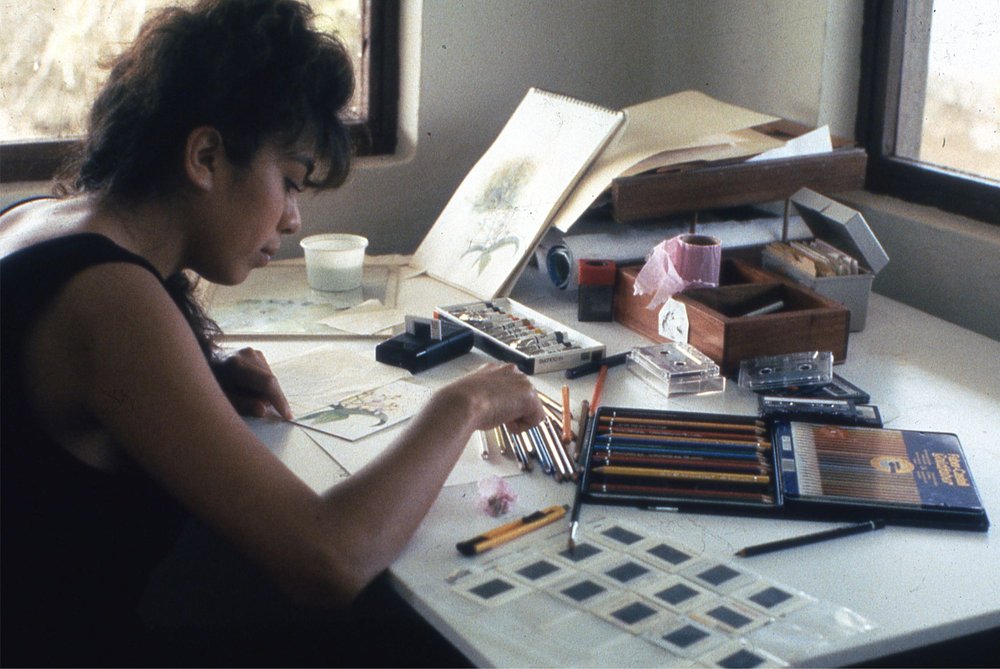Author: Edgardo Civallero
There are stories that are not written.
And yet they are there.
It happens frequently with illustrations. Memories are hidden under the undecided strokes of a pencil. Behind the soft layers of watercolor that make up the feathers of a bird or the petals of a flower. Beneath the small ink-filled nibbles left by a nib.

One holds those drawings or those paintings years, decades later, and is unable to find those hidden stories, to read them. He only sees the final result, which dazzles: the composition, the bright or muted tones, the lights and shadows, the profiles, the details...
And the signature. Always the signature, usually on the bottom right, leaving proof ―at least― that there was someone behind all that. Sometimes the name is shortened to an initial: that "A." which hides whether the person was an "Antonio" or an "Alejandra" ― or an "Alexandra", or an "Alessandra".
Sara Santacruz always signed like this. "Sara Santacruz". And there are a good number of illustrations with that rubric in the art collection of the archive of the Charles Darwin Foundation. They are usually copies. Or photocopies. Original illustrations are rare. Sara's are ink drawings: a linear, careful, patient work. Its themes are very broad, ranging from iguanas and cormorants to opuntias, with the entire range of Galapagos flora and fauna between these two extremes. She even had time for some humorous illustrations. That's the name of the folder in which I found them, at least: "humor". Some funny, mischievous vignettes, scribbled quickly.
At the time, all those images appeared illustrating books, and articles, and reports that populate the shelves of our library. Sara Santacruz was one of the most prolific illustrators in the history of science in Galapagos. Her contribution was huge, valuable, important, and aesthetically interesting.
And that's it.
For me, the professional collector of dusty memories, the story ended there. I felt unable to scratch the surface of those papers and look beyond.
Until, in our audiovisual collection, I found a slide that allowed me to do so.
The photograph was taken by Donald Sutherland in 1993 at the Charles Darwin Research Station, and is labeled "Sara Santacruz at work."
Now I know that Sara drew on a table, horizontally. That she used Faber Castell colored pencils (I assume that she used them when she could afford them) and that she sharpened them either with a blade or with one of those traditional sharpeners provided with a little box to collect the wood chips. That she used slides to prepare her images, and that she observed those slides through one of those old viewfinders that no longer exist: those that used the sun as a source of illumination, and that only those of us who lived with those types of supports knew. That she also colored with watercolors, and that she prepared several originals until she was satisfied with one. That she listened to music while she worked, and that she spread out on the table until she occupied all the available space.
Now I have a story. The story behind the drawings. A bit of time, a moment from the past, a fragment of life concentrated on paper.
Next time I come across an illustration with the familiar signature and strokes, I will be able to read beyond the image. And I will see the artist's hands, and the pencils, and the cassettes, and the Galapagoan afternoon filtering through the windows.





